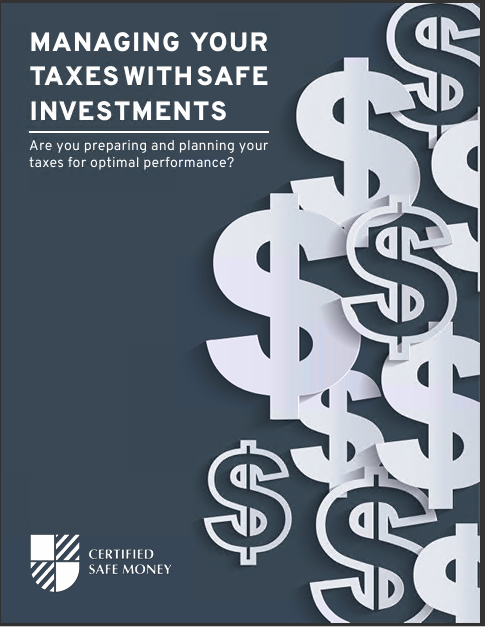Key Takeaways:
- Indexed Universal Life (IUL) insurance and 401(k) plans offer distinct tax benefits, contribution limits, and investment options that cater to different retirement planning needs.
- Understanding the unique features of IULs and 401(k) plans can help you make a well-informed decision for a secure retirement.
Choosing Wisely: IUL vs. 401(k) for Your Retirement Plan
Choosing the right retirement plan is crucial for ensuring financial security in your later years. Indexed Universal Life (IUL) insurance and 401(k) plans are two popular options, each with its own set of benefits and features. This article examines the differences in tax benefits, contribution limits, and investment options between IULs and 401(k) plans, helping you make an informed decision for your retirement.
Understanding Indexed Universal Life (IUL) Insurance
IUL insurance is a type of permanent life insurance that combines a death benefit with a cash value component that can grow based on the performance of a stock market index. It offers both insurance protection and investment growth potential, making it an attractive option for those looking to balance life insurance needs with retirement savings.
Tax Benefits of IULs
One of the key advantages of IULs is their tax-deferred growth. The cash value in an IUL policy grows tax-deferred, meaning you do not pay taxes on the earnings as they accumulate. Additionally, policyholders can take loans against the cash value of the policy, and these loans are typically tax-free as long as the policy remains in force. This feature can provide a source of tax-free income during retirement.
Moreover, the death benefit paid to beneficiaries is generally tax-free, providing financial security to your loved ones without the burden of taxes.
Contribution Limits of IULs
IULs do not have annual contribution limits like 401(k) plans. The amount you can contribute to an IUL policy is primarily determined by the insurance company’s underwriting guidelines and your financial capacity. This flexibility allows high earners to invest more than the limits imposed by other retirement accounts, potentially maximizing their tax-deferred growth.
Investment Options in IULs
The cash value in an IUL policy is linked to the performance of a chosen stock market index, such as the S&P 500. However, the policy does not directly invest in the market. Instead, it credits interest based on the index’s performance, subject to caps and floors set by the insurance company. This means you can benefit from market upswings while being protected from downturns, as the cash value will not decrease when the market performs poorly.
IULs also offer a level of flexibility in terms of premium payments and death benefits. Policyholders can adjust their premium payments and death benefit amounts as their financial situation changes, making IULs adaptable to different life stages and financial needs.
Understanding 401(k) Plans
A 401(k) plan is an employer-sponsored retirement savings account that allows employees to contribute a portion of their salary to the plan on a pre-tax basis. Employers often match a portion of employee contributions, providing an additional incentive to save for retirement.
Tax Benefits of 401(k) Plans
Contributions to a traditional 401(k) plan are made with pre-tax dollars, which reduces your taxable income for the year. This immediate tax benefit can lower your current tax bill and allow more of your earnings to grow tax-deferred until retirement. When you withdraw funds from a traditional 401(k) during retirement, the distributions are taxed as ordinary income.
Roth 401(k) plans, on the other hand, are funded with after-tax dollars. While there is no immediate tax benefit, qualified withdrawals in retirement are tax-free, providing a significant advantage if you expect to be in a higher tax bracket during retirement.
Contribution Limits of 401(k) Plans
For 2024, the contribution limit for individuals under 50 is $23,000, with an additional catch-up contribution of $7,500 allowed for those 50 and older. Employers can also contribute to your 401(k), but the total combined contribution from both employee and employer cannot exceed $69,000 for 2024 (or $76,500 including catch-up contributions for those 50 and older).
Investment Options in 401(k) Plans
401(k) plans typically offer a range of investment options, including mutual funds, stocks, bonds, and target-date funds. The specific investment choices vary depending on the plan provider, but they generally allow you to tailor your investment strategy to your risk tolerance and retirement timeline.
Employers may also provide guidance or access to financial advisors to help employees make informed investment decisions. This level of support can be particularly beneficial for individuals who are not experienced in managing investments.
Comparing IULs and 401(k) Plans
Tax Benefits Comparison
Both IULs and 401(k) plans offer significant tax advantages, but in different ways. IULs provide tax-deferred growth and tax-free loans against the cash value, along with a tax-free death benefit for beneficiaries. This makes IULs appealing for those looking for tax-free income sources and estate planning benefits.
401(k) plans offer immediate tax deductions for contributions, reducing your taxable income in the year you contribute. Traditional 401(k) plans provide tax-deferred growth, with taxes due upon withdrawal, while Roth 401(k) plans offer tax-free withdrawals in retirement. The choice between traditional and Roth 401(k) plans depends on your current and expected future tax brackets.
Contribution Limits Comparison
IULs do not have strict contribution limits, allowing high earners to invest more without the restrictions imposed by 401(k) plans. This flexibility can be advantageous for those with higher incomes looking to maximize their tax-deferred savings.
401(k) plans have specific annual contribution limits, which can be a drawback for individuals who want to contribute more. However, the employer match component can significantly boost your retirement savings, making 401(k) plans a valuable option for many employees.
Investment Options Comparison
IULs offer a unique approach to investment growth by linking the cash value to a stock market index, providing potential for market gains with downside protection. This can be beneficial for conservative investors who want exposure to market growth without the risk of losing principal.
401(k) plans typically provide a broader range of investment options, allowing you to build a diversified portfolio tailored to your risk tolerance and retirement goals. The availability of various funds and asset classes makes 401(k) plans suitable for both conservative and aggressive investors.
Making the Right Retirement Choice
Choosing between an IUL and a 401(k) plan depends on your individual financial goals, risk tolerance, and retirement strategy. Here are some considerations to help you decide:
When to Choose an IUL
- Estate Planning: If leaving a tax-free death benefit to your beneficiaries is a priority, an IUL can be an excellent choice. The tax-free death benefit ensures that your loved ones receive financial support without the burden of taxes.
- Flexible Contributions: If you want the ability to contribute more than the limits imposed by 401(k) plans, an IUL provides the flexibility to invest additional funds based on your financial capacity.
- Tax-Free Income: If you anticipate needing tax-free income during retirement, the ability to take tax-free loans against the cash value of an IUL can be a significant advantage.
When to Choose a 401(k) Plan
- Employer Match: If your employer offers a matching contribution, it’s wise to take full advantage of this benefit. Employer contributions can significantly enhance your retirement savings.
- Immediate Tax Benefits: If you want to reduce your taxable income in the current year, contributing to a traditional 401(k) plan provides immediate tax deductions.
- Investment Diversity: If you prefer a wide range of investment options to build a diversified portfolio, 401(k) plans offer various funds and asset classes to suit different investment strategies.
Achieving Financial Security in Retirement
Both IULs and 401(k) plans can be integral parts of a comprehensive retirement strategy. Understanding the differences in tax benefits, contribution limits, and investment options between these two products is crucial for making an informed decision. By carefully considering your financial goals and risk tolerance, you can choose the retirement plan that best meets your needs and helps secure your financial future.
Contact Information:
Email: devin@ambrosewealth.com
Phone: 5099875559














